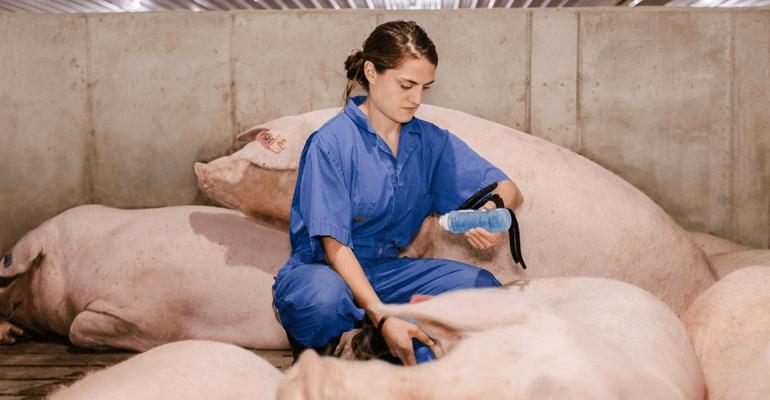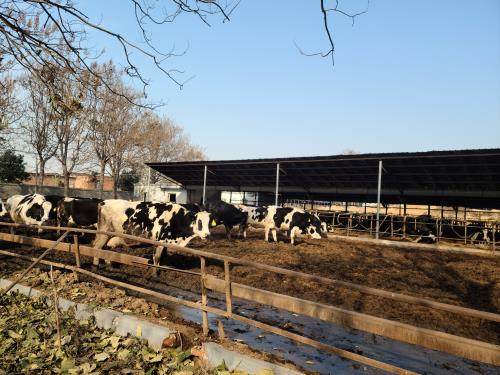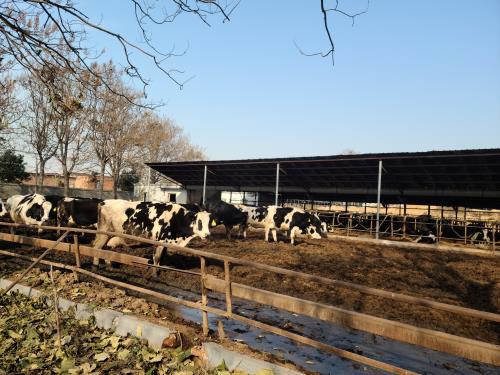The uterine body of a pig is a short tube located between the uterine horn and cervix, approximately 5cm in length. The size of the uterine body can be accurately measured in vivo through Veterinary ultrasound. The uterine body is thin and has a thin wall. Both the uterine body and the uterine horn are composed of the endometrial layer, uterine muscle layer, and uterine serosal layer.

The endometrium, also known as the mucosal part, is the mucosal surface of the uterine horn. On the edge of the mesentery, there are filamentous transverse parallel folds, while on the free edge, there are broad longitudinal parallel folds. The mucosal surface of the uterine body has thin leaf like, irregular longitudinal folds.
The mucosal surface of the cervix has two rows of many thick and blunt semi-circular protrusions, which are interlocked and embedded with each other. When using B-ultrasound to detect the cervix in animals, the mucosal layer can be clearly observed.
The epithelium of the endometrium is composed of stratified columnar cells. The lamina propria beneath the epithelium is composed of fibrous connective tissue, which includes fibroblasts, macrophages, and mast cells. The lamina propria is divided into two layers: deep and shallow. The shallow layer has more nuclei and is deeply stained, mostly consisting of fibroblasts; The deep layer, also known as the basal layer, has few nuclei, light staining, oval shaped nuclei, and is a poorly differentiated mesenchymal component.
During ovulation, the lamina propria thickens and the entire mucosa becomes edematous, facilitating the attachment and development of the zygote. By the end of the luteal phase of the cycle, it becomes thinner. The uterine gland is vertically embedded in the lamina propria from the mucosal surface. The gland is relatively straight and sparse in the shallow layer, mainly the opening part of the gland, while in the deep layer, it has multiple branches and bends, resulting in multiple cross-sections.
The uterine glands of immature adult sows are lined up with lower columnar epithelium, with a large and central columnar nucleus, well-developed Golgi apparatus, and relatively few mitochondria. Some uterine glands are elongated, while others extend to the height of the epithelium. Mitochondria take on various forms, such as branching and regular transverse ridges. No elongated mitochondria can be seen in the pregnant uterus.
Some granular endoplasmic reticulum is distributed in the cytoplasm, and occasionally small and dense glycogen droplets appear in the cell matrix. Top binding complexes, lateral bridging granules, interlocks, and cell processes maintain epithelial continuity. Most cells have microvilli on their luminal surface. There are ciliated cells at the top of the glandular duct. The substrate layer is well-developed and approximately 65nm thick. The glandular epithelium is a single layer of columnar epithelial cells, which also undergo periodic morphological changes during estrus.
There are layered connective tissue sheaths on the outside of the uterine glandular wall, and clear tissue gaps can be seen around the sheaths. Histochemical evidence shows that the submucosal lamina propria, the lamina propria surrounding uterine glands, and the surrounding blood vessels all exhibit strong positive reactions for alkaline phosphatase, but negative reactions are observed in the deep interstitial components and the surrounding blood vessels between muscle layers.








